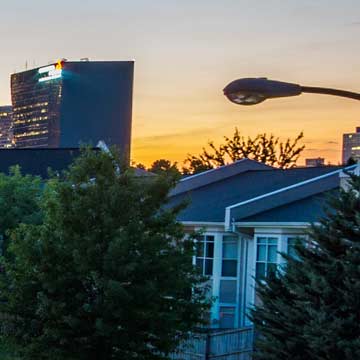The Supreme Court's future hinges on the 2020 election
Law Firm News
The blockbuster Supreme Court term that just ended was a (nearly) unmitigated disaster for movement conservatives. Chief Justice John Roberts declined to overturn precedent on abortion rights. Conservative activist Justice Neil Gorsuch showed he would join the court’s liberals when the statutory text tells him to. The natural question then is, what’s next? What are the implications for the future of the court?
The short answer is that the court’s future direction is in flux like no other time in recent memory. And what happens next will be determined by the 2020 election and the justices’ health.
The first crucial point here is that, had Roberts and Gorsuch not crossed the court’s ideological lines in the most high-profile cases of the term, we would be looking at an extremely conservative court for the foreseeable future, regardless of the outcome of the November vote.
The court has five conservative justices who ? until this term ? seemed capable of acting as an unassailable voting bloc for the indefinite future. (The oldest, Justice Clarence Thomas, is only 72.) This bloc was formed after Senate Majority Leader Mitch McConnell and the Republican Senate blocked a confirmation vote on Judge Merrick Garland during the Obama administration, allowing a newly elected President Donald Trump to appoint Gorsuch. The retirement of Justice Anthony Kennedy, a swing voter who repeatedly delivered liberal-friendly results on issues like gay rights, abortion and Guantanamo, then allowed Trump to appoint Justice Brett Kavanaugh, who is (so far) a much more reliable conservative.
This conservative majority was the first on the court in nearly a century, and conservative activists anticipated that it would overturn Roe v. Wade and hold the line on cultural issues like transgender rights.
Related listings
-
LGBT activists see hard work ahead despite Supreme Court win
Law Firm News 06/14/2020LGBT-rights activists are elated by a major Supreme Court victory on job discrimination, and hope the decision will spur action against other biases faced by their community despite Trump administration efforts to slow or reverse advances.In most sta...
-
Supreme Court blocks House from Mueller grand jury material
Law Firm News 05/19/2020The Supreme Court on Wednesday temporarily prevented the House of Representatives from obtaining secret grand jury testimony from special counsel Robert Mueller’s Russia investigation. The court’s unsigned order granted the Trump administ...
-
Nebraska court orders disclosure of execution drug records
Law Firm News 05/09/2020Nebraska prison officials cannot withhold public records that reveal where they purchased their supply of lethal injection drugs, the state's highest court ruled Friday.In ordering the documents to be disclosed for public scrutiny, the Nebraska Supre...

USCIS Adjusting Premium Processing Fee
U.S. Citizenship and Immigration Services (USCIS) announced today it is adjusting the premium processing fee for Form I-129, Petition for a Nonimmigrant Worker and Form I-140, Immigrant Petition for Alien Workers beginning on Oct. 1, 2018 to more effectively adjudicate petitions and maintain effective service to petitioners.
The premium processing fee will increase to $1,410, a 14.92 percent increase (after rounding) from the current fee of $1,225. This increase, which is done in accordance with the Immigration and Nationality Act, represents the percentage change in inflation since the fee was last increased in 2010 based on the Consumer Price Index for all Urban Consumers.
“Because premium processing fees have not been adjusted since 2010, our ability to improve the adjudications and service processes for all petitioners has been hindered as we’ve experienced significantly higher demand for immigration benefits. Ultimately, adjusting the premium processing fee will allow us to continue making necessary investments in staff and technology to administer various immigration benefit requests more effectively and efficiently,” said Chief Financial Officer Joseph Moore. “USCIS will continue adjudicating all petitions on a case-by-case basis to determine if they meet all standards required under applicable law, policies, and regulations.”
Premium processing is an optional service that is currently authorized for certain petitioners filing Forms I-129 or I-140. The system allows petitioners to request 15-day processing of certain employment-based immigration benefit requests if they pay an extra fee. The premium processing fee is paid in addition to the base filing fee and any other applicable fees, which cannot be waived.


